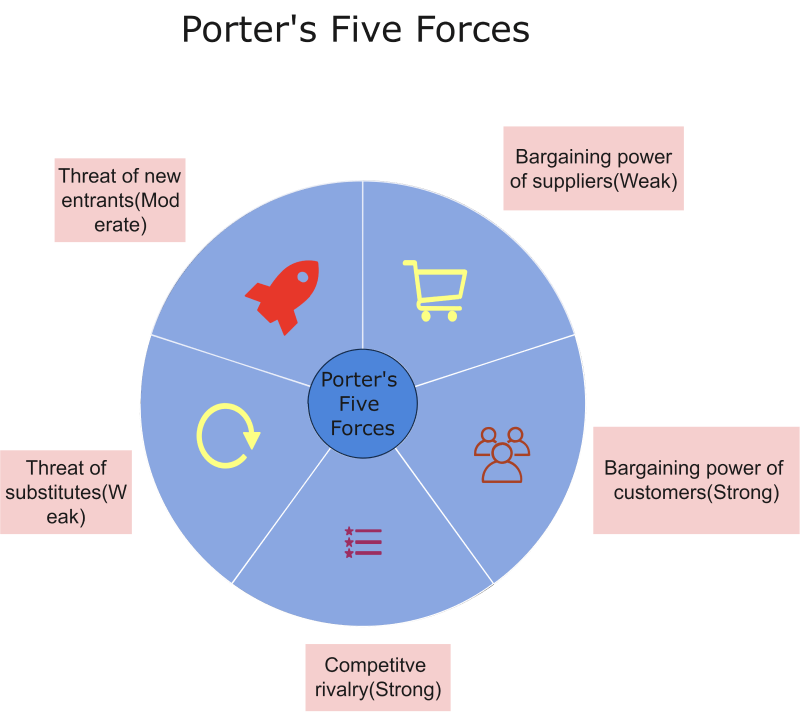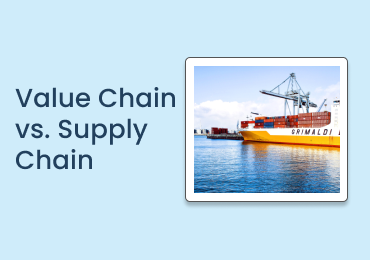Apple Porter's Five Forces Analysis

1. Introduction
Michael Porter introduced the Five Forces method to analyze the given fundamental forces of competition in 1979. The first force in Porter's model is competition within an industry. The other four forces include the threat of new entrants in the market, the bargaining power of suppliers, the threat of substitute products, and the bargaining power of buyers or consumers. We can take the example of Porter's five forces for Apple Inc. to see how things work.
2. Background Of Apple Inc
Porter's five forces for Apple Inc. is an excellent way to understand the dynamics of competition and different powers in any industry. Apple is a successful company with its product range, including its Macintosh computers and operating system macOS, iPad, iPhone, and others. It was founded in 1976 and continued to grow despite having ups and downs. Apple's industry analysis shows its success has a foundation in innovation, unique and strong brand loyalty. Ultimately in 2018, Apple's market capitalization crossed $1 trillion.
3. Apple Porter's Five Forces
Porter's five forces for Apple shows that the two strong forces are industry competition and the bargaining power of buyers. The bargaining power of suppliers, the threat of buyers' bargaining power, and the threat of new entrants in the marketplace are all comparatively weak or moderate elements. Let us look at the model in detail.
- Competition in the industry (Strong force)
- The threat of new entrants (Moderate force)
- The bargaining power of suppliers(Weak force)
- The bargaining power of customers(Strong force)
- Threat of substitute products or services (Weak force)
3.1. Competition in the industry (Strong force)
Apple competitors' analysis shows that many companies directly compete with Apple, including Google, HP, Samsung, etc. Every company conducts massive research and development to introduce the most innovative products to gain market share. We know that switching devices and OS is usually low to moderate cost action, and consumers do not need substantial investment to switch from Android to iPhone or vice versa. Hence Apple competitors' analysis also shows the strong force of competition in the industry. Various factors contributing to this force are;
- The high aggressiveness of competitors in R&D and innovation is a strong force.
- Low differentiation of products is another strong force.
- Consumers can buy a new product without substantial investment, so the low switching cost is another strong force.
3.2. The threat of new entrants (Moderate force)
In Porter's five forces for Apple the threat of new entrants is low to moderate. Establishing a big company within the industry is extremely expensive, and it needs finance, manpower, infrastructure, and marketing. To make a noticeable mark in personal computing and gadgets also requires brand recognition, which is another overhead.
The other challenge is that standing in the face of already established companies like Apple, Google, and HP is not easy. Let us see the contributing factors.
- High investment requirements are a weak force.
- Brand development cost is another weak force.
- New entrants' potential and capacity development is also a tough call, which is a strong force.
3.3. The bargaining power of suppliers (Weak force)
In Porter's five forces for Apple, the bargaining power of suppliers is a weak force. Apple has many potential suppliers with adequate supply, and these suppliers can provide parts, processors, packaging, and virtually everything related to Apple products. Also, Apple enjoys economies of scale, and suppliers do not want to lose the business.
Factors contributing to the weak force of bargaining power of suppliers are;
- A large number of suppliers is a weak force.
- The weak force of large order size by Apple.
- Firm concentration to supplier concentration ratio is another weak force.
3.4. The bargaining power of customers (Strong force)
Factors responsible for the bargaining power of customers in Porter's five forces for Apple are both individual bargaining power and collective bargaining power. Individual bargaining power is weak because losing a single client does not affect Apple's revenue. However, collective bargaining power is a strong force.
Various factors contributing to the consumers' bargaining power are;
- A strong force of low switching cost.
- A weak force of individual bargaining power.
- A strong force of collective bargaining power.
3.5. Threat of substitute products or services (Strong force)
In Porter's five forces for Apple, we see a weak threat of substitute products. This is a weak force because currently, we do not see any products that can surpass the facilities provided by Apple's products.
The breakdown of contributing factors to the threat of substitute products is as follows.
- Moderate to the high availability of substitutes is a moderate force.
- Inadequate substitutes are a weak force.

4. Strategies for Success
Apple is a very successful company with its market share in trillions. We can identify some strategies as the foundation for success and for establishing its status in the marketplace.
- Cost leadership
- Differentiation
- Focus
4.1. Cost leadership
Cost leadership is attained by reducing manufacturing and operating costs, packaging costs, control on labor and resource management, and exceptional management strategies. Apple also enjoys economies of scale as it gets lower prices per unit because of its high amount orders. Then, it also has the opportunity of determining its products' price because of unique products.
4.2. Differentiation
Apple is known for its unique features and control of the products collaborating with Apple. For example, every product does not work on Apple OS, but then macOS is open-source software, and everybody can reach the source code. So, Apple is unique because it leaves its door open while keeping its products' exclusiveness.
4.3. Focus
Apple's focus strategy is based on its innovation. Apple can take advantage of focus strategy using the room for improvement and introducing exclusive products that no one else is offering.
5. Key Takeaways
Apple enjoys an enormous market share because of its unique and innovative products. It also uses dynamic marketing strategies to attract consumers by intriguing them. One such example is open-source software.
You can learn many lessons using Porter's five forces for Apple, and you can also draw a visual depiction of Porter's five forces model for your company. EdrawMax Online is a comprehensive software for drawing your business diagrams. The templates library gives you a quick start to create your masterpiece as a professional-looking diagram. Also, use the import of data and files to save time and use your legacy data effectively. Find more Porter’s Five Forces templates.
6. References
-
Burke, A., van Stel, A., & Thurik, R. (2010). Blue ocean vs. five forces. Harvard Business Review, 88(5), 28-29.
-
Grundy, T. (2006). Rethinking and reinventing Michael Porter's five forces model. Strategic Change, 15(5), 213-229.











